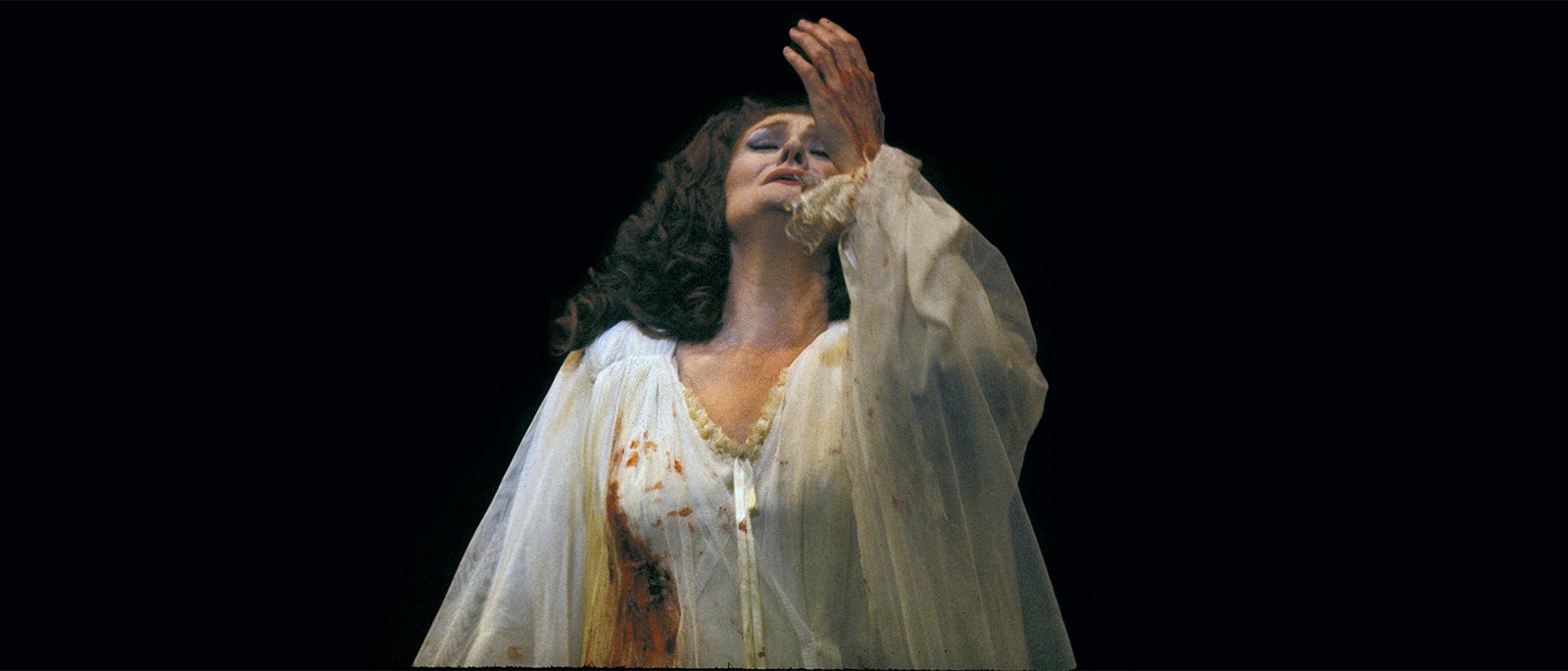
Unhinged
Few operatic conventions are more thrilling to behold than the “mad scene.” And the one in Donizetti’s Lucia di Lammermoor (performed over the years by some of the greatest sopranos in Met history) is definitive. By William Berger
Madness isn’t just something that happens in opera. Madness is what opera is about. Opera was created in Italy to rediscover the spirit of the ancient Greek drama festivals, and those festivals were an attempt to refine the ecstatic but bloody, drug-and-wine-fueled orgiastic rites of pre-civilized Greece. So the spirit of opera itself is a sort of dangerous yet divine derangement. Opera fans know that the highest accolade you can pay a performance is not that it was “great,” but that it was “demented.”
Operas, from the earliest to the most recent, have excelled in portraying madness and using the medium of music to penetrate the civilized person’s usual defense barriers of logic. Nowhere is operatic madness explored more memorably than in Donizetti’s masterpiece Lucia di Lammermoor, the story of a fragile young woman who comes unglued and kills her betrothed on their wedding night. Lucia boasts an iconic mad scene: The entire opera is a journey toward and a reaction to that quarter-hour in Act III when Lucia unravels.
The heroine’s encounter with the far side of sanity, however, is not exactly the madness of the asylum. This is the ecstasy of self-realization, a state so transcendent it can only be understood by the rest of us as madness. It is the madness of the Holy Fool in various mythologies, of the Shaman in a trance, or of the peyote quest. It is empowerment, and it is conveyed by vocal virtuosity—a word that means not only “power,” but specifically the power associated with a man, in Latin a “vir.” Lucia’s madness is her toppling of her female confinement, the end of her victimhood. It is her triumph, and in a “demented” performance of it, it is ours as well.
Photo: Joan Sutherland (top of page)
William Berger is a Met Radio Writer and Producer.